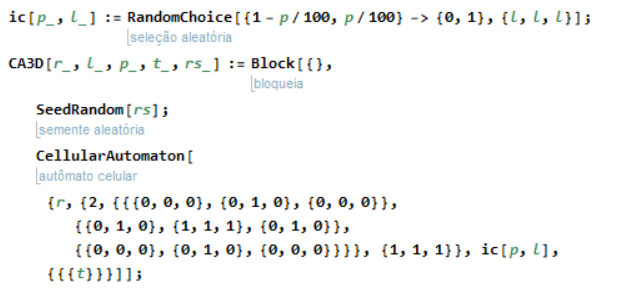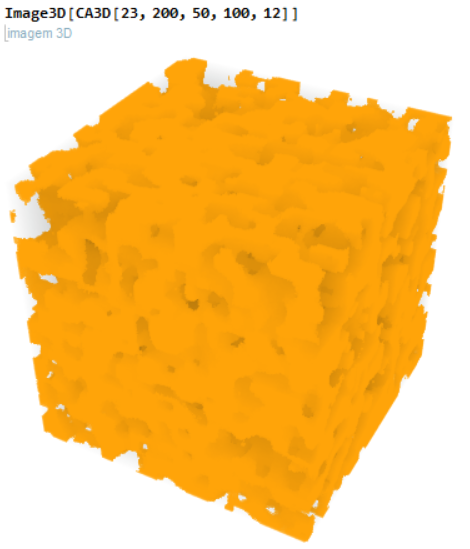Hi! I'm generating some cellular automata for 3D printing and I'm having trouble exporting my models. Here is what I've been doing. This is how I'm generating the array that defines the cellular automata

Using one of the set of parameters that I'm running, I get this array 
From what I've tried I can generate a 3D model with this array using 2 functions, that are Image3D and Graphics3D. With image3D I get something like this 
With Graphics3D, I get something like this  Since I'm 3d printing them I need to use the Graphics3D cause I'm not able to export the result on the 3rd image (using Image3D) to a .stl file. And here is where my problems start. First, the parameter "l" describes the domain of the 3D model that I'm generating and the rendering process using the Graphics3D with a domain this huge (which is when l=200) doesn't complete and the program freezes and closes. I suppressed the rendering and it completed this part but when I try to export the model, it takes a lot of time and in the end generates an empty file. I'm using a 200x200x200 cell domain, the cell is set to be 1mm side length by default so it generates a 3d graph with 200mm side length, but I need the models to have 50mm side length, so I reduce it using Simplify3D (which is the software that i'm using to 3d print it). I think the problem is with the number of cuboids that I'm generating using those parameters (23, 200, 50, 100, 12) with Graphics3D which is around 4007223 cuboids. So I'd like to know, is there a way to export this many cuboids efficiently? Can I reduce their size to be less demanding computationally? Or is there another function that can do what I'm trying to do using Graphics3D and it's more likely to be successful? I attached the file with the coding bellow, it only has the expression for the Graphics3D function that generates the cellular automata.
Since I'm 3d printing them I need to use the Graphics3D cause I'm not able to export the result on the 3rd image (using Image3D) to a .stl file. And here is where my problems start. First, the parameter "l" describes the domain of the 3D model that I'm generating and the rendering process using the Graphics3D with a domain this huge (which is when l=200) doesn't complete and the program freezes and closes. I suppressed the rendering and it completed this part but when I try to export the model, it takes a lot of time and in the end generates an empty file. I'm using a 200x200x200 cell domain, the cell is set to be 1mm side length by default so it generates a 3d graph with 200mm side length, but I need the models to have 50mm side length, so I reduce it using Simplify3D (which is the software that i'm using to 3d print it). I think the problem is with the number of cuboids that I'm generating using those parameters (23, 200, 50, 100, 12) with Graphics3D which is around 4007223 cuboids. So I'd like to know, is there a way to export this many cuboids efficiently? Can I reduce their size to be less demanding computationally? Or is there another function that can do what I'm trying to do using Graphics3D and it's more likely to be successful? I attached the file with the coding bellow, it only has the expression for the Graphics3D function that generates the cellular automata.
 Attachments:
Attachments: